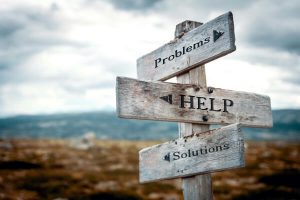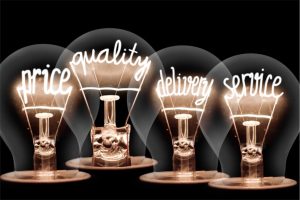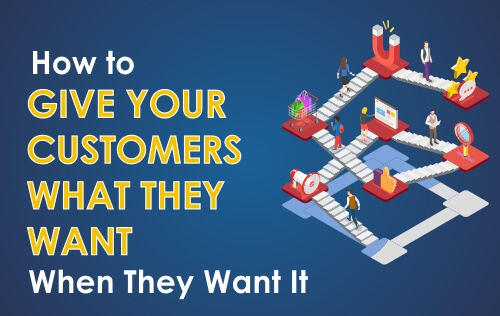Mapping your content to the Buyer’s Journey
One of the issues with content marketing I often see clients struggle with is, simply, where to begin. How do you continuously provide quality, relevant and helpful content to your customers? One of the ways that you can do this is by mapping your content to the Buyer’s Journey.
What is the Buyer’s Journey?
Hubspot defines the Buyer’s Journey as “the process buyers go through to become aware of, consider and evaluate, and decide to purchase a new product or service”. In other words, it is the process by which customers decide to buy a product or service and who to buy it from.
Traditionally, the process has been depicted as a linear model consisting of three phases – Awareness, Consideration and Decision. However, as technology has evolved and consumers have become more empowered, the journey has become a lot more complex. It can no longer be viewed a simple linear process, but rather a complicated journey of loops and backtracks.
Most importantly, however, is that in today’s markets, the journey no longer ends when the purchase is made. It has become ever more critical for businesses to retain customers and to delight them in such a manner that they become advocates for your business, repurchasing from you and referring other prospects to you.
For the purposes of mapping out your content, the linear model can still be used as a base, bearing in mind the above-mentioned points.

What about the sales funnel?
You may already be familiar with the Sales Funnel and wondering how this relates to the Buyer’s Journey. Both describe the same journey that a person goes through when purchasing a product or service.
The Sales Funnel is more company-centric in that it follows the process from when a potential prospect first hears about the company, through to making a purchase from that specific company.
The Buyer’s Journey is more focused on the potential prospect, focusing on their behaviour during any buying process, regardless of which company it ultimately buys from.
Looking at the model above, the sales funnel would apply as follows:

Stages of the Buyer’s Journey
Awareness

During the Awareness stage a buyer becomes aware of a need or a problem and begins researching possible solutions. For example, a person wants to go on holiday in South Africa. During the Awareness stage they have not yet considered where in the country they would like to go or what they want to do or where they will stay. So, they will research some options first.
Many people turn to the internet for this. According to Internet Live Stats, Google processes over 40 000 searches every second, which translates to over 3.5 billion search per day. And this volume grows at roughly 10% each year.
Your main goal during the Awareness stage is to provide the necessary information to prospects in order to move them further along the journey. At this stage, the buyer is not yet ready to buy, so hold off on the hard sell for now. Rather focus on driving traffic to your website by giving relevant, helpful and topical information. As a travel agency, you can, for example, publish a top 10 list of holiday spots in South Africa or helpful hints on deciding on a holiday destination.
Using the right keywords are critical in this stage. Understanding what words prospects will use when researching their problem or need will help ensure that your content gets found when they search those words.
Another important goal during this stage is creating brand awareness. Always brand your own original content with your logo and provide links back to your website or add social share buttons.
Consideration

From the above example, our holidaymaker has identified the need to holiday in Cape Town. What they would be looking for now is the various solutions, such as accommodation, transport, tours, etc. This is the Consideration stage. The buyer now begins evaluating these options.
As a travel agency, you could publish a list of family-friendly activities in and around Cape Town or give pros and cons to renting self-catering accommodation. During this stage, you want to start convincing the prospect that a tour is the best solution and that your company is the expert in this field.
During the Consideration stage (or middle of the funnel), you should focus on building relationships that will drive prospects back to your site. Provide additional information, case studies, videos and fact sheets that are helpful and proactive without being pushy. This will make leads more comfortable with your brand and therefore more willing to consider your business when making their buying decision.
It’s also good to start capturing emails that would convert visitors into leads. You can do this by providing gated content that will allow visitors to download content or watch videos after they have submitted their email address.
Social media also plays an important part in nurturing your leads by creating conversations, answering questions and establishing that important comfortable relationship.
Decision

The buyer is now ready to make a decision. They have decided on the solution and will now begin looking at which companies or products will best fit their needs. From our example, the holidaymaker has decided that they want to purchase a tour package that will include accommodation, transport and activities for the whole family. But who to book their tour package with?
They will be comparing features and prices, but they will also be looking for value for money, so your content should convince them that your tour package offers the most complete solution at the best valued price.
During the Decision stage, buyers will also look more closely at your company – reading customer testimonials and reviews, case studies, your previous experience, product development and other data that will persuade them to buy from your company.
You goal during this stage is to convince the lead that your company is the best provider. Provide the necessary information that shows the buyer what doing business with you will be like and make sure that the final buying process is smooth and convenient.
Retention

Traditionally, this would be the end of the Buyers Journey, but consumer behaviour has changed significantly over the years. Today’s consumer demands greater after-sales service and customer support. They want a positive customer experience throughout their relationship with you and that includes the support and service they receive after they have made a purchase.
Also consider that, according to Invesp, it costs five times as much to attract a new customer than it does to retain an existing one, while the probability of selling to an existing customer is 60-70% versus the 5-20% probability of selling to a new customer. In addition, they found that existing customers are 50% more likely to try new products and spend 31% more when compared to new customers.
Considering these numbers, it is evident just how important it is to focus on the after-sale experience of customers. During this stage, your focus should be on retaining as many customers as possible. NG Data suggests that customer retention begins with the first contact a customer has with your company and continues throughout the working relationship. This is an important observation, as it implies that companies should start building a trusted and respected relationship with potential customers from the start, laying the groundwork for retention strategies to take effect after the sale.
Manage customer expectations from the outset – rather under-promise and overdeliver than set impossible expectations. Build trust by becoming your customer’s trusted advisor and be proactive in your approach to customer service and support. Continue to do this and customers will be much more willing to come back to you again and again.
Advocacy

Once you have established a long-lasting relationship with your customer and continue to deliver great services and/or products, they will be more willing to spread the word and advocate your business. In fact, according to information gathered by Jitbit, brand advocates are 83% more likely to share information about your company and are 50% more likely to influence a purchasing decision than a regular customer.
Furthermore, it is estimated that brand advocates are five times more valuable than regular customers because they spend more and purchase more often.
The reality is that we trust the recommendations of friends and family much more than we trust advertising. We want to hear about the experiences of actual customers and will often turn to online reviews or talk to people we know have purchased form a particular company.
Ensuring that your customers have the best customer experience from the start and continuing to deliver great service and support after the sale, will go a long way in securing positive reviews about your company.
Your main goal during the Advocacy stage is to identify, connect with and empower your brand advocates. The key here is to be authentic and human. Avoid implementing incentive-based advocacy as it will come across as forced and put off more people than it attracts. Rather make a concerted effort to continue to engage with your customers. Listen to their opinions or pain points and act on what they like or don’t like. You can also reward your advocates with special deals, sneak peaks or access to special events.
The key here is to allow brand advocates to sing your praises in their own words and in their own way. Ensure that your referral process is as easy as possible. You can also create content that advocates can use when writing about your company. Just remember that the idea is to assist rather than dictate. Provide images, videos, case studies and testimonials.
Creating your content map
Now that you have a better understanding of the Buyer’s Journey, you can start to map out your content to engage with customers at the various stages of their buying journey. In order to do this effectively, you need to start by drawing up Buyer Personas.
Hubspot defines Buyer Personas as “fictional, generalised representations of your ideal customers”. It is an important part of understanding who you want to attract to your brand and how to engage with them throughout the Buyer’s Journey.
Once you have your Buyer Personas in place, you should do a content audit to establish what type of content you currently have and what you would need to engage with your ideal customer at the various stages. Make sure you understand what type of content resonates with people at the various stages of the Buyer’s Journey.
At this stage you would also want to look at keywords to use at each stage of the Buyers Journey to ensure that your content shows up during internet searches.
Below we have created a handy guide that you can refer to when doing your content analysis.

Today’s companies are trying to do business in an increasingly difficult economic environment, greater competition and a much more empowered and discerning customer. Companies have to work much harder at gaining the attention of their ideal customer and convincing them to make a purchase.
This is not necessarily a bad thing. It compels companies to be a lot more strategic in their marketing and to produce high-quality, valuable content consistently. Understanding the Buyer’s Journey and mapping your content to fit your Buyer Personas at each stage of their journey will help ensure that your brand stands out.

